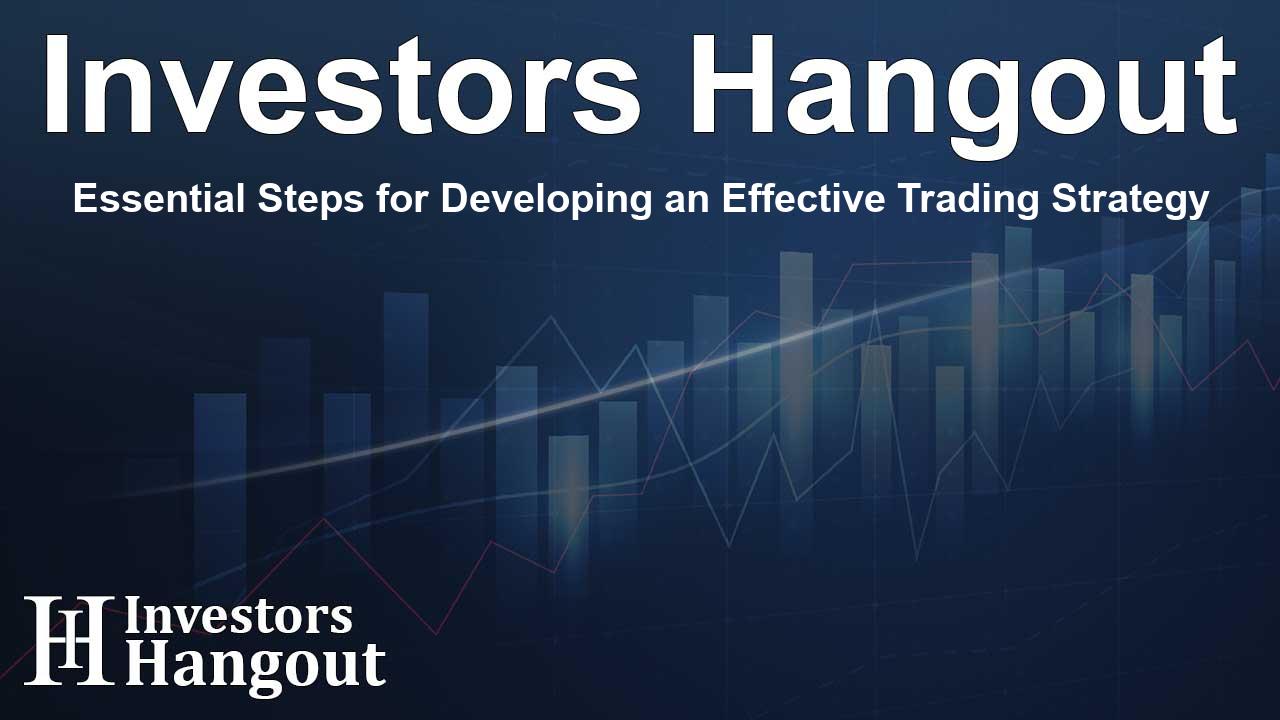Essential Steps for Developing an Effective Trading Strategy

Understanding the Foundation of a Trading Strategy
Achieving success in trading goes beyond making haphazard guesses about market direction; it involves implementing a structured framework grounded in discipline and precision. This framework empowers traders to identify high-probability trades while skillfully managing their risks. By adhering to a cohesive set of guidelines, traders can position themselves favorably in the markets, leading to a consistent and replicable approach to trading.
Step 1: Assessing Market Sentiment
Before making any trading decision, it’s vital to gauge whether the market is bullish or bearish. A straightforward method to accomplish this is by analyzing price action in relation to moving averages. If the price consistently remains above crucial moving averages, such as the 20 Exponential Moving Average (EMA) or the 50 Simple Moving Average (SMA), the market is considered bullish. Conversely, if the price is below these moving averages, the market is bearish. Establishing this initial market sentiment is essential—traders should seek long opportunities when the market is bullish and focus on short positions otherwise, allowing them to align with prevailing trends and avoid counterproductive trading actions.
Step 2: Distinguishing Trend from Range
Markets do not always exhibit clear trends. Before executing trades, it’s crucial to recognize whether the price is trending persistently or is bouncing within a defined range. Traders can leverage indicators like the Average Directional Index (ADX) for insight; a reading above 25 indicates a strong trend, while values below 20 suggest a stagnant market. Alternatively, observing price action can help confirm these conditions—traders should look for sequences of higher highs and higher lows in trending markets or the opposite in downtrends. If the market appears range-bound, it’s wise to steer clear of breakout trades and instead focus on potential reversals near the range's extreme points.
Step 3: Timing Entry with Pullbacks
After identifying a market trend, optimal entry points often occur during pullbacks. Rushing to enter a trade at peak prices can lead to unfavorable positions. Instead, traders should wait for price corrections toward critical support or resistance zones and seek confirmation of upward movement before committing to a trade. By doing so, traders can secure entry at advantageous prices, enhancing their risk-to-reward ratios significantly.
Step 4: Implementing Efficient Stop Loss Strategies
A sound risk management strategy is vital for any successful trading approach. To achieve this, traders should consider setting their stop losses based on a shorter timeframe rather than the entry timeframe. This method allows for tighter stop placements, optimizing potential losses while bolstering the overall risk-reward setup. A precisely placed stop can maintain manageable risk levels while reducing the likelihood of being prematurely stopped out by minor price fluctuations.
Step 5: Prioritizing Capital Protection
Regardless of how promising a trading setup appears, preserving capital must take precedence. Limiting risk to just 1% of the total trading account ensures that a series of losses does not jeopardize a trading portfolio. This approach supports long-term sustainability, fostering emotional discipline and sound trading judgments.
Step 6: Setting Realistic Profit Targets
To enhance profitability, traders should define profit targets based on analysis from higher timeframes. This technique provides a broader perspective, enabling the identification of logical support and resistance zones where price movement may stall. Setting a profit target that adheres to a minimum risk-to-reward ratio of 1:2 allows traders to secure larger wins compared to their losses. This framework facilitates profitability, even with a win rate around 50%.
Step 7: Dynamic Trade Management
Successful trading extends beyond securing entries; it also involves adept trade management to lock in profits. As trades progress positively, adjusting the stop loss to the breakeven point eliminates any residual risk. Additional adjustments can further secure profits, safeguarding against favorable trades that may otherwise turn unfavorable. This adaptive risk management technique permits traders to capitalize on market trends while minimizing potential risks.
By embracing this strategic framework, traders can effectively eliminate uncertainties, trade with renewed confidence, and cultivate a consistent advantage in the financial markets.
Frequently Asked Questions
What is the first step to developing a trading strategy?
The initial step is determining the market bias—whether it’s bullish or bearish—using tools like moving averages.
How can a trader identify whether a market is trending?
Traders can use the Average Directional Index (ADX) to identify trends, where a reading above 25 indicates a strong trend.
Why is risk management important in trading?
Risk management protects capital from significant losses. Limiting risk to 1% of the trading account helps maintain sustainability.
What should traders do during price pullbacks?
During pullbacks, it's crucial to wait for confirmation at support/resistance levels before entering trades for improved pricing.
How can traders enhance their profitability?
By setting targets based on higher timeframes and ensuring a risk-to-reward ratio of at least 1:2, traders can optimize their winning potential.
About The Author
Contact Henry Turner privately here. Or send an email with ATTN: Henry Turner as the subject to contact@investorshangout.com.
About Investors Hangout
Investors Hangout is a leading online stock forum for financial discussion and learning, offering a wide range of free tools and resources. It draws in traders of all levels, who exchange market knowledge, investigate trading tactics, and keep an eye on industry developments in real time. Featuring financial articles, stock message boards, quotes, charts, company profiles, and live news updates. Through cooperative learning and a wealth of informational resources, it helps users from novices creating their first portfolios to experts honing their techniques. Join Investors Hangout today: https://investorshangout.com/
The content of this article is based on factual, publicly available information and does not represent legal, financial, or investment advice. Investors Hangout does not offer financial advice, and the author is not a licensed financial advisor. Consult a qualified advisor before making any financial or investment decisions based on this article. This article should not be considered advice to purchase, sell, or hold any securities or other investments. If any of the material provided here is inaccurate, please contact us for corrections.
